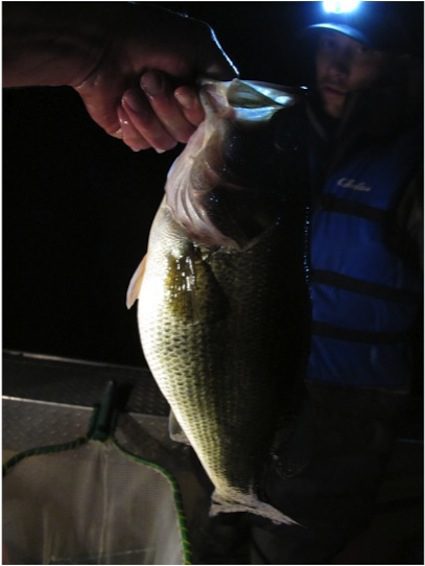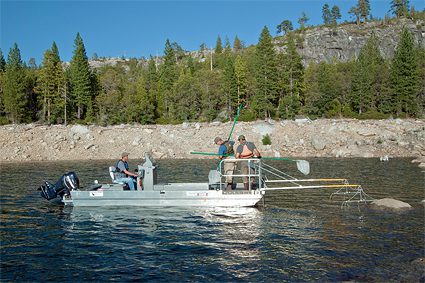Monday October 4, 2010

Electrofishing surveys are an effective management tool for assessing fish species composition and abundance. Equipment ranges from small units that can be mounted on backpacks, pontoons, or the stream bank for use in streams and ponds, to electrofishing boats designed for lakes and rivers. Electrofisher units are comprised of a power source (a battery or generator), a control unit that regulates the electrical current, a positive electrode (anode), which is usually pole mounted, and a negative electrode (cathode).

Electricity is usually applied as direct current (DC) or pulsed DC. Pulsed DC is more effective at transferring current through water and less traumatic on fish. Electrofishing works because the normal response of a fish to direct electric current, referred to as galvanotaxis, is to swim toward the positive (anode) electrode. As in all vertebrate species, fish muscles are controlled by electrical signals sent through the nervous system from the brain. The brain is believed to be negatively charged, therefore orienting the fish toward the positively charged anode. The electrical current interrupts the neurological pathway causing the fish to involuntary swim toward the anode. Electrofishing requires skill and training because if the current is too strong, the force of the muscle contractions can cause spinal injuries.
Photo source: FISHBIO
